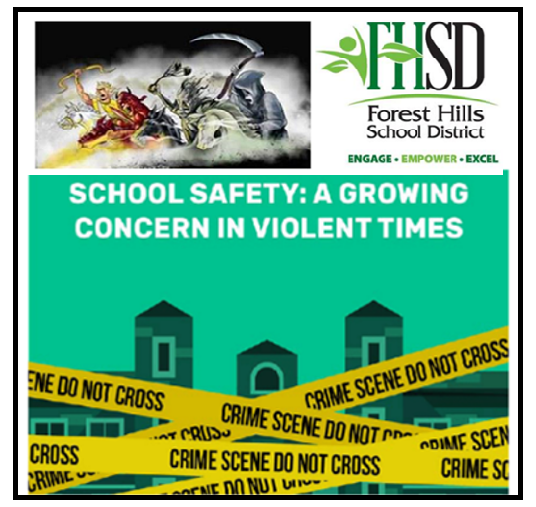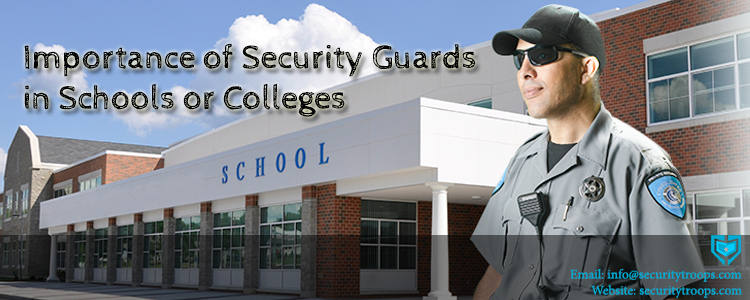![]()
![]() TODAY IS
TODAY IS
SATURDAY, JUNE 04, 2022
TRUMP’S FIVE HUNDREDTH DAY OUT-OF-OFFICE
AND THE ANDERSON APOCALYPSE IS WONDERING ABOUT THE SCHOOL SECURITY FORCE AT THE FOREST HILLS SCHOOL DISTRICT


School Security Force Marvin L. Covault
The Columbine High School massacre occurred on April 20, 1999. Seems like yesterday. How many similar school shooting since then? Too many.
As I write this it is less than 48 hours after the school shooting in Texas. Officials have not yet released any data on the exact timeline of the events. But let’s plow ahead with an abbreviated after-action review of the shooting; the Good, Better, How process.
• First question, what did they do good? Law enforcement was on the scene ASAP. The shooter was taken down ASAP.
• Second, what could they have done better? In this case about everything.
• Third, how do we go about institutionalizing what needs to be done, to the maximum extent possible, to prevent this from ever happening again? That is the intent of what follows.
The old saying, “If you don’t know where you are going, any road will get you there.” True. That is why every planning action must begin with a statement of the problem.
PROBLEMS:
• Current solutions revolve around the rapid arrival of law enforcement personnel. They arrive in minutes. We need to counter the attack in seconds.
• Multiple law enforcement agencies will arrive on the scene simultaneously. No one is in charge.
• It is unlikely there will be any pre-planned immediate first responder counteractions.
• Law enforcement arrivals, generally speaking, will not be intimately familiar with the terrain; “parking lot #3” or “in the west wing” or “room 18” will likely be meaningless information.
• Where will the first responders go for an initial briefing by someone on the scene?
• If in-school individuals are countering the shooter, who are they, and where are they?
• In the last two decades of school, shootings have there ever been any in-place 24/7 deterrent actions? Not that I have heard of.
• A current culture of hate and blame in America is reinforcement for a potential shooter.
WHO ARE THE SHOOTERS?
Here is a scenario that I believe is not too far-fetched. In most of the school massacres the shooter, after the fact, has been tagged as a “loner.” Perhaps the young man is not a loner by choice. Let’s say he is perceived by his fellow students as socially awkward, or not handsome, or has a handicap, bad hair, bad clothes, bad hygiene, whatever. He can easily become a victim of social bullying that is so prevalent today. He develops a hatred for schools in general, for his former school, his current school, and the people that are there every day. His absence from sports or other external socializing drives him to video games to occupy his time. His parents feel relieved that he has some interest to turn to. At the end of the day, he “wins” his video game because he has killed the most people. In his demented mind killing is a game. Etc. etc.
Here is a concept of operations to deter and, if deterrence fails, counter an in-school shooter. I realize the idea of arming school employees is ugly, but if safe and secure schools are a priority, we must consider all options.
DETERRENT ACTIONS:
Because of the timeline associated with a school shooting (the arrival of first responders will always be outside the window of vulnerability), there must be a school Security Force in-place every second of every school day. More on this in a few minutes. If the shooter has given any thought to where his target is, he may well be aware he could be walking into a Security Force death trap. Institutionalized deterrence.
Because of the need for multiple fire exits from a school, all exit-only doors become potential breach points. Have a camera on the door at all times and live feed to the “security rooms”. When that door is breached from the outside, flashing lights and a unique audio alarm will immediately alert the Security Force. Physical and technical deterrence.
Every school has multiple fire alarm mechanisms on the wall in the hallways that can be activated by anyone sensing a fire. Add a second alarm for anyone seeing a gun or sensing there is a shooter in the school. Every person in the building is authorized to pull the alarm if necessary. Every student becomes a player in security. Have a camera observing the alarm to preclude pranksters from activating it. The shooter alarm must have a very distinctive sound and be frequently tested. When that alarm goes off it will initiate several actions. Every classroom will get locked down from the inside. The Security Force will react immediately and initiate pre-planned actions. A deterrent action provides peace of mind to everyone on campus.
THE SECURITY FORCE:
In today’s school systems, typically about half, the total number of employees are not in the classrooms; janitors, school bus maintenance personnel, counselors, nurses, the principal, etc. Also, typically there will be a position for an Assistant (or Vice) Principal to perform admin duties, scheduling, overseeing testing, supervising lunch, hallways, special events, etc.
In this concept of operations, the Assistant Principal becomes, as his/her priority, the leader of the Security Force. That leader will designate someone to be second in command so that 100% of the time school is in session, one of them will be in the school and ready to react.
The Security Force can be put together from, in my concept, the non-teaching employees. Depending on the size of the school, perhaps anywhere from four to ten individuals will be needed. Four to ten is a good span of control for one tactical leader. If a school system has hired a full-time security person, they will also be a full-time member of the force but not necessarily the leader. Members of the force will respond better to directions from the second most senior person in the school than from a fellow employee (It’s a human nature thing).
No school employee should be forced to be in a position to use a gun. Therefore, filling the Security Force with volunteers will be a priority.
The Security Force will of course undergo extensive and recurring training in marksmanship. But just as important will be situational tactical training. Throughout the U.S. local law enforcement will avail themselves of live-fire facilities that teach how to take down a room and how to react to a hostile situation in that room. That type of training is always filmed so that it can be critiqued and prepare someone to react instantly to varying situations.
Training to neutralize a shooter is all about tasks, conditions, and standards. The training regimen must define all the tasks required under every varying condition and to a specified standard. Security Force members who cannot meet the standards must be replaced. Over time, skills deteriorate. Training is not a once-and-done drill. Repeat it whenever it is necessary.
Somewhere in the school, there will be “security rooms.” In those rooms, there will be a monitor for all the cameras that look at the exit-only doors. The doors will be wired so that when a door is breached from the outside the monitor will immediately provide a flashing red light and an audio alarm. A monitor will necessarily be in the Security Force leader’s office, in that of his second in command, and probably in the full-time security person’s office.
DAY-TO-DAY SECURITY FORCE:
Every member will carry a small radio that is active every minute of the school day. There will be no chatter or admin communications; it will be used only when there is a shooter alarm of any kind. Additionally, every member will have at their immediate disposal a red body armor vest; red to distinguish them as an armed Security Force member when the first responders arrive. Don’t shoot the good guys.
In each member’s place of duty, mounted on the wall next to their red vest, will be a metal box with a keypad. Inside the box will be three things,
1) a loaded/round-chambered handgun,
2) a lanyard with one master key to open every classroom
3) a lanyard configured to carry additional magazines for the handgun (because most often, lady’s apparel does not have pockets).
What are we describing here? Doing all of the above will solve the most serious part of the present-day problem. First responders will arrive ASAP but that is some number of minutes. We must have a response in seconds. First responders will arrive ASAP at the shooter’s location in some number of minutes. “ASAP” must be defined as some minimum number of seconds or kids will die.
For example, the monitor alarm in one of the security rooms goes off indicating a breach of exit-only door three. Through prior planning and many training rehearsals here is what happens:
Within a specified standard number of seconds, every Security Force member must be out of their office door with a vest, two lanyards, a weapon, and their radio.
Through prior detailed planning and training, Security Force members Tom and Sara are closest to the breach; they will go directly there in a specified, rehearsed number of seconds reporting all their actions over the radio for every member to hear. Continuous situational awareness. All other members will report in “X” seconds with their gear to a designated assembly area in that building.
An astute student believes they can see the butt of a pistol sticking out of the jacket pocket of someone moving down the hallway. They know they are empowered to pull the shooter alarm hanging on the wall.
The monitor in the security rooms will indicate the location of the alarm mechanism. The first order over the security force radio will be “west wing, third floor”. Through countless trial runs during training, the Security Force leader knows he should have at least one member arriving at that location within “X” seconds with everyone who is present for duty within “Y” seconds.
Shots fired. One immediate radio call to the entire Security Force from whoever heard the shot; “shots fired in building one.” There is nothing else required at that time. Everyone goes to a pre-designated assembly point in that building. The Security Force leader or his/her assistant would call 911 because they can provide the greatest clarity at that point without the emotion most people would have.
TRAINING:
If I was a county superintendent of schools, I would set this program in motion, explain it in detail to the County Sheriff and local Chiefs of Police, ask for their assistance in providing training areas (ranges and shooting houses) and provide training assistance throughout the year. Include them in unannounced response training sessions for the Security Force.
There is one critical element in the training regimen that must be considered. A member of the Security Force may be the best marksman and may get exceptional scores in the shooting house, but the leader also has to be comfortable with that person’s mental status. Are they comfortable with executing the concept of “taking a life to save a life”? Can they be relied on to pull the trigger if and when it becomes necessary?
CONCLUSIONS:
Accountability: This program does not need permission from the president or the U.S. Congress; although they should applaud it. It does not require state law or the Governor’s approval, but they could fund the security person for each school. County Boards of Education, superintendents, and principals are accountable for the existence and professionalism of such a program. This is all about decentralized planning and execution.
The deterrent Security Force will be available every school day. There are no conflicts with personnel being on vacation. Everyone involved is expected to be at work every day. No requirement nights, weekends, and only for half the year; 180 school days, 185 non-school days per year.
Reaction timing, seconds vs minutes, solves the problems articulated above.
Deterrence: Someone, however deranged may think twice about knowing he is walking into a potential death trap against the on-campus Security Force. Future attempts to shoot up a school are likely to be unsuccessful and get national attention; deterrence in action.
BOTTOM LINE:
Security Force mission statement: Sustain the actions necessary to deter future shooters from acting out against schools and, if deterrence fails, be capable every minute of every school day to take out the shooter(s) in seconds.
With 142,000 schools in America, the likelihood that a particular in-school force will ever be used is extremely low. However, the likelihood that an internal force will be necessary in some schools in the future is high; that’s the world in which we live. Without it, more kids will die.
This program is not hard, not expensive, and clearly within the art of the possible. It is far better than what we have now which is nothing but hope. Hope is not a process.
Marvin L. Covault, Lt Gen US Army, retired, is the author of VISION TO EXECUTION, a book for leaders, and a new book May 2022, FIX THE SYSTEMS, TRANSFORM AMERICA.
![]()
![]()